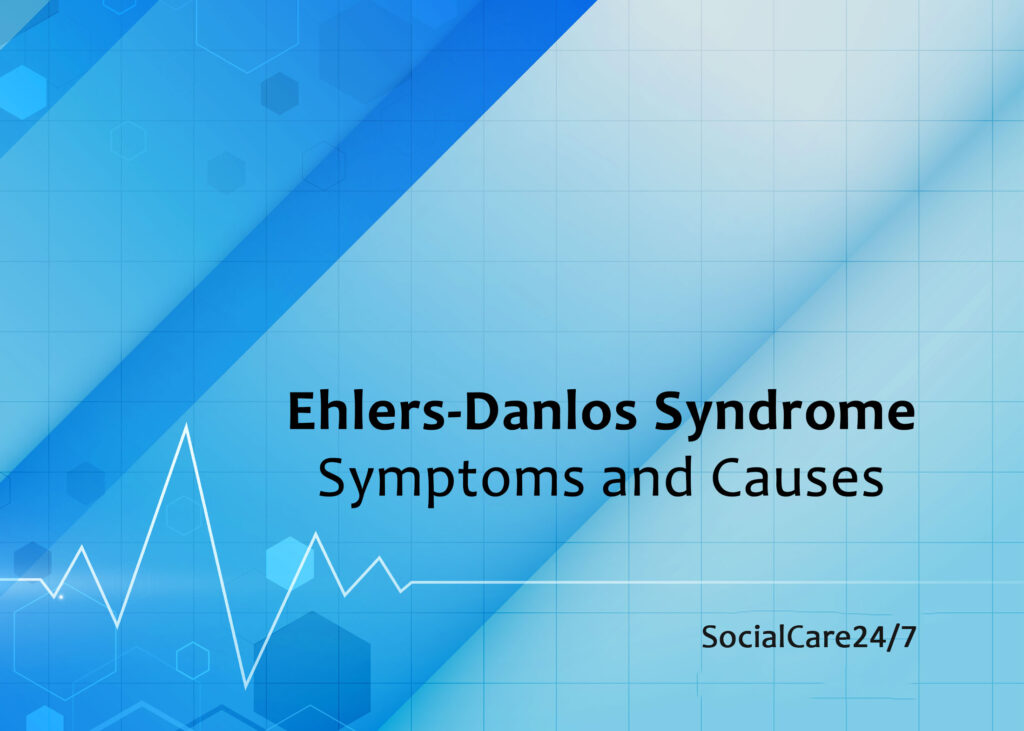EDS genetic illnesses can make life difficult for some people. They alter connective fibers, strengthening skin, joints, blood vessels, and other tissues. Although its severity varies, sufferers must understand its symptoms, causes, consequences, and treatment.
This article explains Ehlers-Danlos Syndrome in detail for those who have it or are inquisitive.
Discuss Ehlers-Danlos Syndrome
Genetic illnesses named EDS cause connective tissue dysfunction. These layers keep skin, joints, and blood vessels flexible. EDS patients exhibit excessive joint movement, flexible skin, and weak blood vessels, which can be dangerous. EDS can range from mild to severe, depending on the subtype.
Ehlers-Danlos Syndrome Signs
Ehlers-Danlos Syndrome has many symptoms that vary by person. This list includes common signs:
- Many joints move: If your joints are loose and move abnormally, you have EDS. This condition causes severe joint pain, dislocations, and subluxations.
- Stretchy, weak skin: Skin with EDS may be silky, smooth, and flexible. If you pinch it, it might stretch and bounce back in a strange way. This weakening makes the skin more susceptible to scars, bruising, and slow-healing cuts.
- Simple Injuries: Thin skin bruises easily from tiny impacts. Sores and wounds may heal poorly, leaving thin, wrinkled scars.
- Joint discomfort, arthritis: Overused joints are always painful, and arthritis is more likely to develop early due to stress.
Ehlers-Danlos heart and blood vascular disease
One of the most serious kinds of EDS is VEDS. This type damages the skin, joints, and blood vessels, increasing the risk of deadly complications. Due to their thin, transparent skin, they bruise easily. A thin nose, upper lip, or huge eyes may also make them stick out.
Vascular EDS increases the risk of large blood vessels like the aorta bursting, which can be fatal if untreated. The uterus and intestines can break due to the condition. This makes pregnancy risky for women with this kind of EDS.
What causes EDS?
Changes in genes that prevent collagen production are the leading cause of EDS. Autosomal dominant inheritance indicates that if one parent has the gene, the child has a 50% chance of having it. Hypermobile EDS is the most frequent kind; however, other types are caused by different gene changes.
Each EDS type has a unique aetiology. The gene COL3A1 produces type III collagen, essential to blood vessel walls. Gene alterations that induce arterial EDS usually affect this gene.
Checking for Ehlers-Danlos syndrome
An Ehlers-Danlos Syndrome diagnosis requires a comprehensive clinical assessment, including a medical history and physical test. If a doctor suspects EDS, they may test their genes to determine the type. Some conditions, including hypermobile EDS, have no strong hereditary indications, making them more challenging to distinguish.
This could mean that the diagnosis isn’t final until the patient shows indicators as an adult, dislocates a joint, or gets terrible scarring. Genetic treatment can identify and explain EDS if a family member has experienced it.
Possible Ehlers-Danlos Syndrome complications
What happens with EDS varies depending on the type and severity of symptoms. The main issues are:
- Joint dislocation: People with EDS may dislocate their joints frequently due to looseness. This can cause joint pain and instability.
- Joint pain: People with hypermobile EDS often develop early arthritis and joint pain. This can make moving around difficult as they age.
- Blood vessel cracks: Big blood arteries like the aorta may break independently in severe vascular EDS. If not done immediately, it can be lethal.
- Problems during pregnancy: Pregnant women with vascular EDS should see a doctor since their uterus or other organs may rupture.
Three Ehlers-Danlos disease treatments
Ehlers-Danlos Syndrome has no cure. However, prevention and symptom management are possible. Many treat the following:
- Health care for the body: Doctors recommend physical therapy for those with painful joints or excessive movement. Strengthening your joints helps them stay put.
- Management of pain: Joint pain sufferers may receive NSAIDs and other painkillers.
- Care for your skin: EDS patients should prevent scrapes and bruises since their skin is more susceptible. Some people need rapid skin healing.
- Surgical intervention: In severe cases, blood vessels or muscle breaks may require surgery. However, weak connective tissue makes surgery dangerous.
Genetics and health tips
It is impossible to avoid Ehlers-Danlos Syndrome, but genomics can assist families in recognizing the risks. If you or a family member has EDS or is at risk, now is the time to plan. Genetic guidance can help people who want children predict their gene pass-on risk and prepare for pregnancy issues.
Conclusion
A chronic and complicated disease, Ehlers-Danlos Syndrome affects several joints. EDS sufferers can manage their symptoms with a doctor-made treatment regimen. EDS patients can make better health decisions if they understand its symptoms, causes, and complications. Genetic counseling helps control inherited disorders.
Thus, family planning is essential for those people. Some persons with Ehlers-Danlos Syndrome can live whole lives with the correct care and support.
Source Links;
https://www.mayoclinic.org/diseases-conditions/ehlers-danlos-syndrome/symptoms-causes/syc-20362125
https://en.wikipedia.org/wiki/Ehlers%E2%80%93Danlos_syndrome



